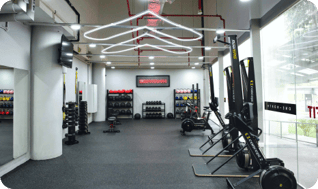For someone who spends plenty of time behind a desk, it is easy to get lost in work, barely noticing the hours passing or the tension building up in your shoulders and lower back. The modern office environment often limits our range of motion, locking us into positions that can lead to discomfort, poor posture, and eventually, more serious health issues. While regular exercise is beneficial, it’s crucial to consider how our daily routines impact the type of exercises and movements that best support our bodies—especially if we’re desk-bound.
If you're a desk worker, your specific approach to exercise and movement should reflect your lifestyle, activity levels, and any common desk-related discomforts you’re experiencing. This article will share practical tips for all activity levels, from those new to working out to those who are regularly active.
Understanding Desk Job Activity Levels
Office workers vary greatly in how active they are outside of work, so I’ll break it down into three categories:
- Sedentary: Outside of work, physical activity is minimal, typically just commuting.
- Moderate/Lightly Active: Engages in exercise two to three times per week.
- Active: Consistently active with gym, sports our outdoor activity three to five times per week.
Each of these groups has unique needs to address the specific demands of a desk-bound lifestyle.
For the Sedentary Desk Worker
If you’re in this category, you might not have a regular workout routine, and that’s okay! The good news is that incorporating even simple movements and activation exercises into your day can make a noticeable difference.
1. Getting Started with Physical Activity
The goal here is to gradually build up a habit of movement, aiming for consistency over intensity. Start with short, manageable sessions like a brisk walk at lunch or gentle stretches after work. Committing to 10–15 minutes a day can be enough to kickstart a healthier lifestyle and improve your body’s resilience to desk strain.
2. Stretches for Basic Mobility
Begin with easy mobility exercises that target the areas most affected by sitting. A few that are helpful to start with include:
(a) Seated Spinal Rotation/Twists
Sitting tall, gently twist your torso to each side. This helps relieve stiffness in the back and encourages spine mobility.

(b) Cat-Cow Stretch
On all fours, alternate between arching your back and lifting your chest. This will open up your thoracic (upper back) area and alleviate tension.

(c) Pecs stretches
Stand next to a wall and place one arm against it, with your elbow bent at a 90-degree angle. Slowly twist your chest away from the wall until you feel a gentle stretch in your chest and the front of your shoulder, holding for 20–30 seconds before switching sides.

3. Strengthening the Posterior Chain
To support long hours of sitting, focusing on strength exercises for the posterior chain (backside of the body) is key. Strong upper back and posterior shoulder muscles support posture and can help prevent back pains from desk postures. Simple exercises like scapular retractions or seated rows are a gentle way to start activating these muscles and improve endurance over time.

Seated rows
Scapular retraction
For the Moderately Active Desk Worker
If you’re already engaging in some weekly exercise, great! Desk work still requires specific focus on mobility and posture, and there are targeted exercises that can help you feel better at work and perform better in other activities.
1. Thoracic and Shoulder Mobility
Even if you exercise regularly, sitting can restrict movement in the thoracic spine and shoulders. Consider adding these moves to your routine:
Thoracic Extensions
Sit on the edge of a chair, place your hands behind your head, and gently extend your upper back over the chair. This movement can counteract the forward hunch often created by sitting.
Thoracic and lats stretch
Sitting at your desk, place both elbows on the edge of the table in front of you. With your palms facing yourself, slide your chair away from the table while letting your chest sink towards the ground and your underarm angle increase (shoulder extension). Hold this for 15-20 seconds and repeat.2. Neck Strengthening
Poor neck posture is common among desk workers, and regular neck strengthening exercises can make a big difference. I recommend chin tucks: Sitting up straight, gently draw your head back as if creating a double chin (it sounds funny but works wonders!). This exercise helps improve posture by strengthening the deep muscles in the neck.
For the Active Desk Worker
If you’re active and already working out regularly, you’re likely building strength and fitness. However, to counterbalance the effects of desk work, there are a few specific areas to consider.
1. Posture Maintenance
Even the fittest of us can find ourselves slouching by the afternoon. Regular movement breaks are vital, as they keep muscles from getting too stiff. Setting an alarm to stand, walk, or stretch every hour can maintain better posture and reduce strain.
2. Upper Back Strength and Mobility
Strengthening the upper back helps counterbalance the shoulders’ tendency to round forward after hours of typing or mousing. Add exercises such as cable rows or reverse flies to your gym routine to improve upper back endurance. Also, include stretches like child’s pose with arms extended forward, which can gently stretch the upper back and shoulders; and ensure that you have warm up/cool down exercises that target your spinal mobility!
Exercises and Movements to Avoid for Desk Workers
It’s not just about what you should do; there are some movements and postures that desk-bound workers might want to minimise.
Prolonged Static Holds
Sitting with poor posture, especially with a rounded back or “turtled” neck, can contribute to discomfort just from being in that position for too long. There is no one posture that is the ‘Best’ if you’re going to be in the same position for hours on end. Our bodies are built for movement and your next posture is your best posture. Change up the position you’re working in every 45 minutes - 1 hour!
Heavy Chest Workouts Without Back Strengthening
Many people overemphasize chest exercises (like push-ups and bench presses) without balancing with enough back exercises. This can worsen forward shoulder rounding. Always include upper back exercises to counterbalance chest work, and a cool down routine that stretches out the tight front chest muscles.
Finding a Customised Approach with UFIT Physiotherapy
Everyone’s body and desk job demands are different, so a one-size-fits-all approach doesn’t always work. As a physiotherapist, personalised support can help identify specific areas of tightness or weakness. At UFIT, we can guide you through a customised exercise plan that reflects your lifestyle, posture, and goals.
Starting with simple adjustments or stretches can make a huge difference, especially if you’re new to exercising. UFIT’s physiotherapists help create a plan that gradually builds strength, improves posture, and releases tension, whether you’re just starting out or looking to refine an existing routine.


.png?width=301&height=187&name=Website%20Navigation%20Images%20(3).png)

-1.jpg?width=1984&height=1196&name=UFIT%20Club%20Street%20Front%20(4)-1.jpg)






